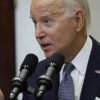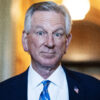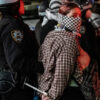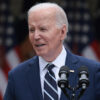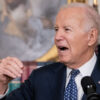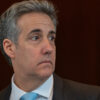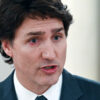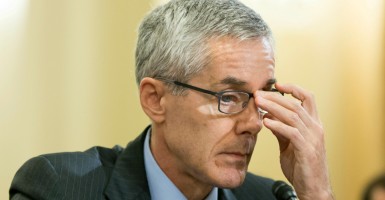As security wait times reach all-time highs at airports across the country, the Transportation Security Administration administrator was brought before a House committee.
TSA Administrator Peter V. Neffenger testified before the House Committee on Homeland Security on Wednesday morning to address his agency’s critics and propose solutions. Here are the highlights from “Long Lines, Short Patience: The TSA Airport Screening Experience.”
1.) The threat of air terrorism still looms large in forming public policy.
The hearing opened with a brief moment of silence for the victims of EgyptAir Flight 804, which crashed en route to Cairo on May 19. Though authorities have not discovered the cause of the crash, there is speculation that there is a terrorism link.
Committee Chairman Rep. Michael McCaul, R-Texas, said in his opening remarks that “Terrorists are trying to bring down airplanes, and the aviation sector is their crown jewel.”
Although the committee repeatedly said it found current TSA wait times unacceptable, several representatives also made it clear that they find reduced security an unacceptable trade-off.
“No one wants to sacrifice security simply to lower wait times at the airport,” Rep. John Ratcliffe, R-Texas, said. “But if we can improve efficiency of security processes without sacrificing safety, I know that’s something we all want to get to.”
2.) Inbound international traffic still poses an increased security risk.
In his opening statements, McCaul voiced concerns over inferior security at international airports with direct flights to U.S. cities. Many airports lack access to resources like full-body scanners and terror watch lists for screening employees, he said, mentioning an incident at Charles de Gaulle Airport in Paris, an airport with 50 daily direct flights into the U.S., where 70 employees were fired due to suspected extremist connections.
Neffenger responded that the TSA had taken a leading role in patching such lapses.
“We’re working with the international community to continually try to raise global standards to the highest possible level,” he said.
3.) Ballooning wait times are a problem of volume…
Neffenger and Rep. Bennie Thompson, D-Miss., both attributed massive upswings in TSA queue length to a growing number of airline passengers combined with a shrinking number of TSA agents.
“In fiscal year 2011, there were approximately 45,000 transportation security officers screening 642 million passengers,” Thompson said. “In 2016, TSA had 3,000 fewer TSO’s screening roughly 740 million anticipated passengers.”
>>> 3 Ways TSA Could Improve Wait Times
To meet this increased demand, the Appropriations Committee recently granted a TSA reprogramming request for $34 million to hire 768 new agents. However, Neffenger warned that this growing number might still prove insufficient.
“We’re looking at the potential for whether a second reprogramming request is needed to hire additional [personnel],” he said.
4.) but also a problem of waste and unaccountability.
Other committee members questioned the prudence of further government funding for the TSA.
Rep. Mike Rogers, R-Ala., argued for an expansion of the Screening Partnership Program, under which the TSA outsources some of its day-to-day screening to private contractors.
“The TSA has waddled in its own bureaucracy for more than a decade,” Rogers said. “Over that time it’s built up a lot of bad habits that have come to fester … These changes will get more out of your organization than any summer rush band-aid bill could ever do.”
Ratcliffe agreed that merely offering the TSA a bigger check might be less important than ensuring that it properly use its current resources.
“I know there was a transportation security roundtable last week where stakeholders repeatedly said that they thought that the staffing model at the TSA was fundamentally flawed,” he said.
Rep. Martha McSally, R-Ariz., questioned why an understaffed TSA would spread itself more thinly by providing security for such events as presidential campaign rallies and criticized the rollout of the TSA’s expedited screening program, Pre-Check, which Neffenger said was a large part of TSA plans to cut down wait times. And Rep. Scott Perry, R-Penn., wondered how an organization which “most of the American people view as a historic critical failure” could request almost $80 million for bonuses and performance awards for fiscal year 2017.
>>> Tired of the TSA? Here’s Why Private Screeners Are the Answer
“Rather than simply provide the TSA with more funding and staffing, this is an opportunity to dramatically change the way we do security,” David Inserra, a policy analyst in The Heritage Foundation’s Allison Center for Foreign and National Security Policy, said. Inserra added:
Specifically, it’s time to kick out the TSA and use private airport screeners, which according to studies, can be more efficient, provide better customer service, cost less, and provide security that is at least as good as the TSA if not better. Luckily, the option to opt-out of the TSA already exists, is known as the Screening Partnership Program or SPP, and is in use at 22 airports across the country. We just need to make it easier for airports to opt out, rather than allow the TSA to drag its feet and restrict the SPP with cumbersome regulations.
5.) There is still hope that Neffenger might turn things around.
Although The Washington Post reported on Monday that Neffenger’s job might be in jeopardy, committee members generally expressed support for his leadership.
“I think you’re a good man, a competent man who’s been given an impossible task to administer the TSA,” Rogers said.
For his part, Neffenger acknowledged the agency’s shortcomings of the past, but argued that it was a mistake to panic too soon about the current state of the TSA.
“The reason I believe this ship can turn is I look to where the United States military was post-Vietnam, and everybody said it was a broken organization, and it turned itself around,” he said. “And how? By focusing on the mission, re-engaging with the workforce, and going back to fundamentals and training across the board. I believe that’s the answer.”

